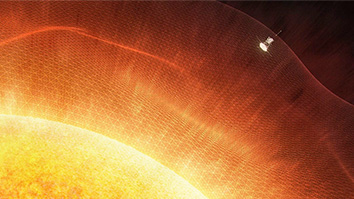Citation
Bahcivan, H., Kelley, M. C., & Cutler, J. W. (2009). Radar and rocket comparison of UHF radar scattering from auroral electrojet irregularities: Implications for a nanosatellite radar. Journal of Geophysical Research: Space Physics, 114(A6).
Abstract
This article presents the estimates for UHF radar volume scattering coefficient of auroral electrojet irregularities based on previous measurements of absolute radar scattering coefficients and in situ rocket spectra. Both estimates indicate that a low-earth–orbiting nanosatellite with a 0-dB gain UHF antenna will be sensitive to bistatic scatter into space from the irregularities illuminated by the ground-based Poker Flat Incoherent Scatter Radar (PFISR). It is also shown that the change of scattering geometry due to the satellite motion is sufficiently slow to “lock on” the target. That is, the satellite will acquire a statistically large number of samples in a sufficiently small time window to resolve the scattering signal power as a function of the Bragg scattering angle with respect to the magnetic field lines.


